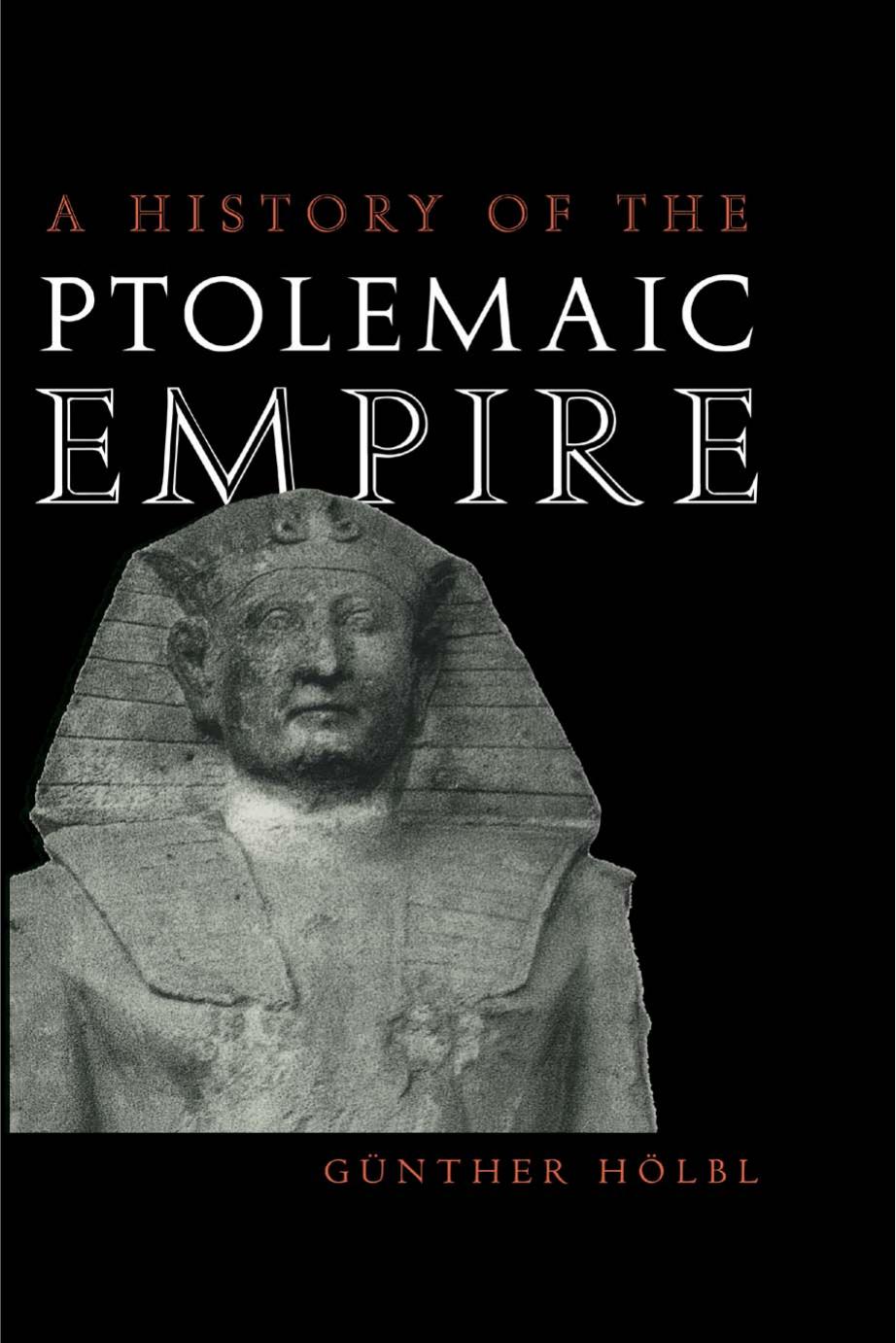A History of the Ptolemaic Empire by Hölbl Günther

Author:Hölbl, Günther.
Language: eng
Format: epub, pdf
ISBN: 9781135119836
Publisher: Taylor & Francis (CAM)
Notes
1 On the revolts in general: Préaux (1936); Peremans (1978).
2 On the situation during the reign of Philadelphos see p. 62 with notes 151f.; on the revolt under Euergetes I, see p. 49.
3 See, pp. 267, 273.
4 On the so-called Demotic Chronicle in the papyrus Bibliothèque Nationale Paris 215 see P. Kaplony: Là I, 1975, 1056â1060 (s.v. Demotische Chronik); the interpretation presented here: J. H. Johnson, âIs the Demotic Chronicle an Anti-Greek tract?â, in Grammata Demotka, FS E. Liiddeckens, Würzburg 1984, 107â124; cf. also Huà (1991, 1), 58f.; on Maat as representing the pivotal value of the Egyptian worldview see above p. 1.
5 On this question: Peremans (1975).
6 Cf. Huà (1976), 84f.
7 Goudriaan (1988), 112f., 141 (Doc. 109); cf. Preaux (1936), 529f.
8 Urk. II.183.1â2; Roeder (1960), 181. In a decree of priests, where the Egyptian world order is aligned with the Ptolemaic king as pharaoh and whose enemies are, therefore, enemies of the gods (see p. 156f.), one should place little value on such statements. Such a message, however, is confirmed by papyrological documents for various Egyptian revolts (see here note 6 and p. 181).
9 See p. 157.
10 Cauville-Devauchelle (1984), 35f.
11 The fragmentary Elephantine-Papyrus P. 23641 cannot unfortunately be dated with certainty. It mentions a Herwennefer who âhas come south while he is revolting in Elephantine (?)â. It may be referring to the aforementioned native king. I would like to thank Prof. Dr K.-Th. Zauzich for elucidating this passage to me in correspondence; cf. Zauzich (1983), 424.
12 On the pharaonic state in Thebes and on source material: Alliot (1951); id. (1952); Pestman (1965); Clarysse (1978); Vandorpe (1986).
13 UPZ II, no. 162, col. 5, 27â30; Pestman (1965); Clarysse (1978); Vandorpe (1986).
14 Pestman (1977), no. 11; K.-Th. Zauzich, âNeue Namen für die Könige Harmachis und Anchmachisâ, GöttMisz 29, 1978, 157f.; Vandorpe (1986), 300.
15 Clarysse (1978). Both kings were read until recently as âHarmachisâ and âAnchmachisâ; on this: ibid.; F. de Cenival, P. dém.Lille 97 verso, Enchoria 7, 1977, 10f.; Zauzich, loc. cit. (note 14).
16 Gauthier (1916), 426â428.
17 In a graffito from Abydos the expanded form âloved by Isis and Osiris â¦â appears: Zauzich, loc. cit. (note 14).
18 Pestman (1977), II. 111f.
19 Pestman (1965), 167.
20 Rosettana: Urk. II.180â183; Roeder (1960), 180f.
21 E. Bresciani, in E. Bresciani inter alios, Assuan, Pisa 1978, 141â143 (no. 43). The graffito is dated 7 March 187 BC.
22 Clarysse (1978), 245f.
23 H. Hauben, âDes bateaux de Diospolis Mikra? A propos de SB VI 9367 VII et VIIIâ, in Proceedings of the XVIII Intern. Congr. of Papyrology, 1986, Athens 1988, II, 243â253; id, âThe Barges of the Komanos familyâ, AncSoc 19, 1988, 207â211.
24 Zauzich (1983), 424; according to the Elephantine papyrus, P. 15527.
25 Described in the priest decree Philensis II: Urk. II. 217. 6â10; 223. 9â224.2; Sethe (1917), 34, 44, 46; Müller, W. M. (1920), 60f., 74â76; Alliot (1951), 435â438; id. (1952). The date of the battle is read as either 27 or 28 August 186.
26 Philensis II (see previous note): Urk. II.214â230; Sethe (1917); Müller, W. M. (1920), 57â88, Tables 21â40; Daumas (1952), 257â260; Türük (1986), 233f.
Download
A History of the Ptolemaic Empire by Hölbl Günther.pdf
This site does not store any files on its server. We only index and link to content provided by other sites. Please contact the content providers to delete copyright contents if any and email us, we'll remove relevant links or contents immediately.
| Bahrain | Egypt |
| Iran | Iraq |
| Israel & Palestine | Jordan |
| Kuwait | Lebanon |
| Oman | Qatar |
| Saudi Arabia | Syria |
| Turkey | United Arab Emirates |
| Yemen |
Empire of the Sikhs by Patwant Singh(22978)
The Wind in My Hair by Masih Alinejad(5034)
Rise and Kill First by Ronen Bergman(4705)
The Templars by Dan Jones(4629)
The Rape of Nanking by Iris Chang(4139)
12 Strong by Doug Stanton(3511)
Blood and Sand by Alex Von Tunzelmann(3140)
Babylon's Ark by Lawrence Anthony(2622)
The History of Jihad: From Muhammad to ISIS by Spencer Robert(2575)
No Room for Small Dreams by Shimon Peres(2320)
The Turkish Psychedelic Explosion by Daniel Spicer(2314)
Gideon's Spies: The Secret History of the Mossad by Gordon Thomas(2305)
Inside the Middle East by Avi Melamed(2305)
Arabs by Eugene Rogan(2263)
The First Muslim The Story of Muhammad by Lesley Hazleton(2219)
Come, Tell Me How You Live by Mallowan Agatha Christie(2212)
Bus on Jaffa Road by Mike Kelly(2104)
Kabul 1841-42: Battle Story by Edmund Yorke(1987)
1453 by Roger Crowley(1971)
